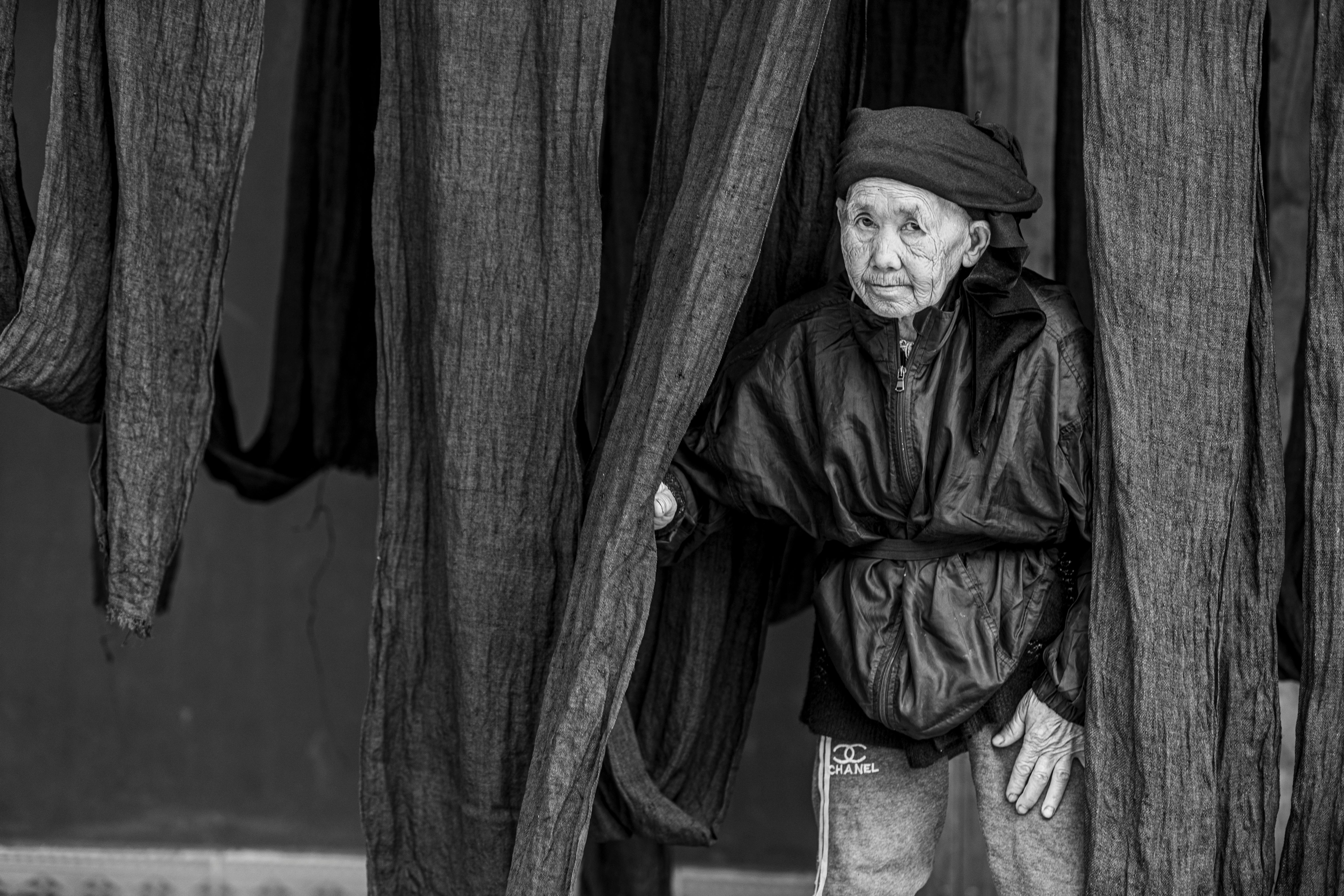Boar Corps Project - Unpacking A Unique Initiative
Have you ever heard about a project that brings together some really different ideas? Well, there's this thing called the Boar Corps Project, and it's quite something. It's an effort that looks at how certain animals, medical practices for them, and even recreational outdoor pursuits all fit together. It’s a pretty unique way of looking at things, you know, kind of like connecting dots that most people might not think to link up.
This initiative, as a matter of fact, isn't just about animals. It also involves some really clever technology. We're talking about a system that helps manage and keep an eye on vehicles that don't have a person inside them. These could be things that fly, move on land, or even go under the water. It’s all about making sure these vehicles can do their jobs, like helping out in emergencies or checking on buildings, in a really organized way, so, it's almost like a central brain for all sorts of useful machines.
So, you might be wondering, what exactly does this "Boar Corps Project" mean for folks interested in science, technology, or even just curious about wild animals? This discussion will take a closer look at what this project is all about, who is working on it, and what kind of interesting things it aims to achieve. It’s a combined effort, really, bringing together different skills and thoughts for some pretty big goals, that, is that.
Table of Contents
- What is the Boar Corps Project's Purpose?
- The Boar Corps Project - A Collaborative Exploration
- How Does the Boar Corps Project Manage Unmanned Vehicles?
- Controlling UXVs with the Boar Corps Project
- Who is Behind the Boar Corps Project?
- What Role Do Wild Boars Play in the Boar Corps Project?
- The Boar Corps Project and Wild Boar Insights
- Where Can You Find Visuals Related to the Boar Corps Project?
- Art and Media Connected to the Boar Corps Project
What is the Boar Corps Project's Purpose?
The Boar Corps Project, you know, has a really interesting core idea. It's about looking at how three areas that don't often get much attention from researchers actually connect. These areas are, basically, the study of human societies and cultures, how we take care of animals when they are sick or hurt, and the sport of going out to catch wild animals. And the animal that ties all this together? Wild boars, of course. It’s a way of bringing these different perspectives together to learn new things, so, it's pretty clever, really.
This project, as a matter of fact, isn't just about figuring out connections. It's also about making sure that the information gathered is shared and understood in a way that helps everyone. By working together, the people involved in this effort can get a fuller picture of how these subjects influence each other. It’s a bit like putting together a puzzle where each piece comes from a different box, but they all fit to show something new, you know? This collaborative spirit is a big part of what makes the Boar Corps Project what it is.
The overall aim, in some respects, is to shed light on areas that might have been overlooked before. When you combine the insights from studying how people live, how animal health is managed, and the activities of those who hunt, you can start to see patterns and relationships that were hidden. This kind of work can lead to a much richer picture of how things operate in the world, especially when it comes to wild animals and their surroundings. It’s a very comprehensive approach, you see, to learning about these things.
The Boar Corps Project - A Collaborative Exploration
This part of the Boar Corps Project is all about teamwork. It’s not just one group of people doing their own thing; it’s a shared effort to investigate. Think about it: you have folks who study how people interact with their environment, then you have animal doctors who understand animal bodies and diseases, and then there are people who spend time in nature, hunting. Bringing these perspectives together, you know, can offer a really unique view on the world of wild boars.
The idea is to do what's called an ethnographic investigation. That, basically, means looking closely at cultures and groups of people to understand their ways of life. When you apply that to the Boar Corps Project, it means understanding how people who hunt, people who work with animal health, and even just communities living near wild boars, all relate to these animals. It’s about getting a deep sense of these connections, really, and seeing things from different angles.
This collaborative approach means that the findings are more complete and, arguably, more useful. Instead of just one side of the story, you get a fuller picture that comes from different kinds of knowledge. It’s a way of building up a more complete understanding of wild boars and their place in our lives, from a health point of view, a cultural point of view, and a natural world point of view. So, it's pretty cool how they put all these pieces together.
How Does the Boar Corps Project Manage Unmanned Vehicles?
Beyond the animal studies, the Boar Corps Project also involves some rather advanced technology. It’s set up to allow for central control and keeping an eye on things like operations that use unmanned vehicles. These are machines that can move around without a person sitting inside them, like drones or robots. This system helps make sure these operations run smoothly, whether they are helping out in a sudden event or checking on a building, or even looking for something that might be a problem. It’s a way to keep everything organized and safe, you know.
The system, in some respects, is designed to give one main spot the ability to oversee many different kinds of unmanned vehicles. This means land-based ones, those that fly through the air, vehicles that move on the surface of the water, and even those that go deep under the sea. All these different machines can be managed from one central place, which makes coordinating their tasks much easier. It's a pretty big step forward for managing these kinds of tools, actually.
For example, when it comes to responding to an emergency, the Boar Corps Project system can help direct various unmanned vehicles to where they are needed most. This could mean sending an aerial vehicle to get a view from above, or a ground vehicle to check a specific spot. It’s about getting information and help to the right place quickly and effectively. This capability, frankly, could make a real difference in how we handle difficult situations, so, it's quite important.
Controlling UXVs with the Boar Corps Project
The unmanned vehicles we're talking about here are often called UXVs. The Boar Corps Project is, basically, a system that lets someone at a main station tell these UXVs what to do and watch them as they do it. Imagine being able to send a flying machine to check a roof, or a robot on wheels to look inside a pipe, all from a comfortable office. That’s kind of what this system makes possible. It's about having a clear picture of what's happening, even when you're not physically there.
This central control means that someone can, essentially, direct multiple UXVs at the same time. This is really useful for things like building inspections, where you might need to look at different parts of a structure. Or for finding potential threats, where you need to cover a lot of ground quickly and safely. It makes operations more efficient and, arguably, safer for people, since they don't have to be in harm's way. It’s a pretty smart way to get things done, you know.
Travis, for instance, was the second person to start a test of this Boar Corps Project system. This shows that the system is being put through its paces to make sure it works well in real-world situations. Testing is, of course, a very important part of making sure any new system is reliable and does what it's supposed to do. It’s a step-by-step process to get everything just right, so, that's what they are doing.
Who is Behind the Boar Corps Project?
It’s always good to know who is driving these kinds of big projects, and the Boar Corps Project is no different. This initiative is, basically, being led by the Air Force Research Laboratory, or AFRL for short. They are known for being at the forefront of new ideas and technologies. Their involvement means that this project is a pioneering effort, aiming to set up something truly new in the world of unmanned systems. It’s a big deal, you know, to have such an organization behind it.
The goal is to create what’s called a drone mesh network. This is a system where many drones can talk to each other and work together, even when they are out of sight of the person controlling them. This ability to operate beyond visual line of sight is a really important step forward, as it means drones can cover much larger areas and perform more complex tasks. It’s a pretty ambitious goal, but one that could change a lot of things, really.
Adéla Ottová is the project manager for the Boar Corps Project. She’s the person on the team who, essentially, knows all the rules and makes sure everyone sticks to them. She keeps an eye on the schedules, makes sure people meet their deadlines, and generally oversees how the project's plans are put into action. Her role is, basically, to make sure everything runs smoothly and that the project stays on track. It’s a very important job, as a matter of fact, to keep such a complex effort organized.
The entire Boar Corps Project is, in short, a combined effort. This means many different people and groups are working together to make it happen. It’s not just one person’s idea or one team’s work. It’s about pooling resources and knowledge to achieve something that would be much harder, if not impossible, for any single entity to do on its own. This collaborative spirit is, arguably, what gives the project its strength and potential.
What Role Do Wild Boars Play in the Boar Corps Project?
Now, let's get back to the wild boars themselves, because they are, after all, a central part of the Boar Corps Project’s name and its research side. The project looks into specific parts of wild boar life and how their populations grow or shrink. This information is really important, for example, when thinking about how to manage diseases like African Swine Fever. Knowing how boars move and live can help prevent the spread of such illnesses, you know.
There are some big questions that the project aims to help answer. For instance, why do wild boar populations seem to be growing everywhere in Europe? And how do we even measure how many wild boars there are in a reliable way? These are not simple questions, and getting good answers requires a lot of careful observation and study. The project, in a way, is trying to bring some clarity to these pressing matters.
Another question that comes up is, how many wild boars are "too many"? This isn't just about counting them; it's about understanding the impact they have on their surroundings and on people. The Boar Corps Project, in some respects, aims to provide insights that can help people make better decisions about managing these animal populations. It’s about finding a balance, really, between nature and human needs.
The Boar Corps Project and Wild Boar Insights
The team members involved in the Boar Corps Project are, basically, putting together their thoughts and findings in various ways. They write blog essays, which are like personal reflections, and field reports, which share what they observe out in the world. They also create visual reflections, like pictures or drawings, to help explain what they are learning. This means you can get a really well-rounded picture of their work and their insights into wild boars, you know.
There was, for example, a special award received on October 18, 2025, for "a truffle egg for rootling rootling.place." This sounds like a specific event or achievement related to the broader efforts, perhaps highlighting some success or recognition within the field. It shows that the work being done is getting noticed and appreciated, which is, of course, a good thing for any project.
Understanding wild boar numbers and how their distribution changes is, frankly, a very important part of managing them. The Boar Corps Project is looking at ways to get good, reliable counts of these animals. This kind of information is crucial for making smart choices about how to interact with wild boar populations, especially when considering things like disease control. It’s all about having good data to work with, really.
Where Can You Find Visuals Related to the Boar Corps Project?
If you're someone who likes to see things rather than just read about them, there are many visual resources connected to the Boar Corps Project. You can find a large number of stock videos related to "boar+corps.+project+art+of+zoo" that are available to use without cost. This means there's a lot of material out there for people who want to see what the project touches upon, you know, in a visual way.
There are also a huge number of free stock photos available under "art+of+zoo+boar+corps+project." These pictures can show a variety of things, like wild boars in their natural settings, general nature scenes, other animals, forests, or even images that are more imaginative, like fantasy drawings or those created by artificial intelligence. These visuals can really help bring the subject matter to life and, arguably, make it more approachable for everyone.
People are also sharing content on social media platforms. For example, there's a Kwai video from a user named "queima gzuis" that has gotten some attention, with likes and comments. This shows that the topic is sparking interest and conversation among people online. It’s a way for the Boar Corps Project and its related themes to reach a wider audience, which is, of course, always a good thing for spreading knowledge.
Art and Media Connected to the Boar Corps Project
When you look for images related to "boar corps project chapter1," you'll find captivating pictures that are, basically, perfect for use in a classroom setting. These photos include diverse images that show things like wild boars, general nature, the animals themselves, forests, and even fantasy drawings or images made by AI. They are designed to make educational materials more interesting and helpful for students, so, that's pretty useful.
Every single image that you download from these collections is, automatically, given a citation. This is a really important detail, especially for educational or research purposes, as it means you can easily give credit where it's due. It helps maintain good academic practice and ensures that the sources of information are clear. This attention to detail is, frankly, a sign of a well-organized resource.
You can also discover a wide range of related photos, each offering its own distinct point of view. This variety means that if you're looking for something specific, you're likely to find it. Whether it's a close-up of a wild boar or a wider shot of its habitat, there are many options to explore. It’s a very rich collection of visual content, you know, for anyone interested in the subject.
There is also a mention of "One of the legitimate & most trusted knotty destination making your wet knotty dreams come true 🐾🥰 you'll never be scammed on zoovalhalla3." This appears to be another piece of content that is linked to the search terms, suggesting a broad range of material that can be found when looking into the "boar corps project" and related keywords. It highlights, arguably, the varied and sometimes unexpected types of information that can surface.
So, to recap, the Boar Corps Project is a unique initiative looking at the connections between anthropology, animal health, and hunting, specifically involving wild boars. It also includes a high-tech system for controlling unmanned vehicles for various important tasks. Key players like the Air Force Research Laboratory and project manager Adéla Ottová are making it happen. The project explores questions about wild boar populations and their impact. There are also many visual resources and related content available for those who want to learn more.
- Sone340
- Megan Stoner Story
- Securely Connect Remote Iot Vpc Raspberry Pi Aws
- Emily Carriveau Divorce
- Qarxiska

Art+Of+Zoo+Boar+Corps+Project+Free Photos, Download The BEST Free Art

Art+Of+Zoo+Boar+Corps+Project+Free Photos, Download The BEST Free Art

Art+Of+Zoo+Boar+Corps+Project+Free Photos, Download The BEST Free Art